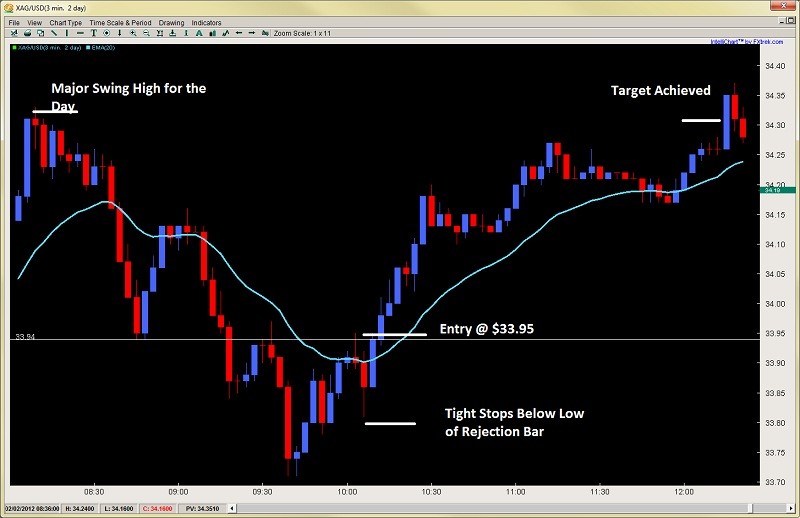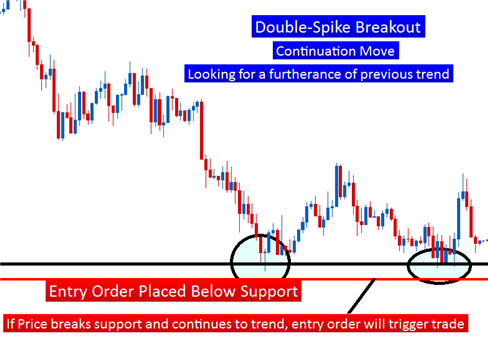How to Day Trade Break Outs Learn How To Day Trade Using Pure Price Action Price Action Trading
Post on: 22 Июль, 2015 No Comment

How to Day Trade Break Outs
Trading breakouts from congestion or trading ranges is one of the trickiest parts of trading, particularly when it comes to trading the futures indexes. One reason this area of trading is so difficult is because human nature tells us that we should be getting short when prices are trading downward, and that we should be getting long when prices are trading upwards. Unfortunately, what seems natural is what will often get you into trouble when trading the markets. What I am about to show you may open your eyes to a better understanding of exactly how to go about trading breakouts profitably. Keep reading to learn exactly how to day trade break outs !
Congestion areas and trading range areas are nothing more than an area where the bulls and bears are in near equilibrium. These areas can be as small as a few ticks, up to several points wide depending on what time frame chart you are currently viewing. For the sake of a mental picture for this article, lets assume we are looking at a 2000 tick intra-day trading chart, which is somewhat similar to a 5 minute trading chart. I prefer tick charts to time charts for the simple reason that I believe that I can see more details in the price action, but thats for another article and another time. Lets concentrate on trading rages for today.
One of my most important trading rules is that I must NEVER buy or sell the break out of a trading range. The reason for this rule is that most trading range breakouts fail at least once, if not more than once, before prices will truly start trending again. Remember, a trading range is nothing more than a temporary point of equilibrium in the market. If prices move too far to the bottom of the range, the buyers tend to swamp the sellers, and prices move back up. When prices move near the top of the range, the sellers swamp the buyers and prices start to move down again.
At some point, enough buyers or sellers will join in to push the market slightly higher than the previous high, or slightly lower than the previous low, and this will usually create a failed break out. These failed break outs, by a tick or so, are very common in the ES and the other mini indexes. One of the most common entry traps will occur when enough buyers or sellers join in to actually push prices out of the trading range with a very strong bullish bar, or a very strong bearish bar. Even then, it is very likely that the break out will fail first, and prices will pull back again. The point Im trying to make here is that most trading range breakouts, no matter how weak or strong they look, will fail the first time out in most cases.
Nothing is ever written in stone when it comes to trading, so occasionally, you will get a break out that never checks up and simply moves strongly in the direction of the break out. It is my opinion that this is the exception though, rather than the rule. A strong break out will happen only often enough to keep you trying to perfect it, and your trading account funds will more than likely be reduced while trying to figure out how to make it work in your favor. At the very least, you will usually be forced to ride out a pull back with a much bigger stop than you would prefer in order to survive the trade.
Now that we have discussed what happens with most trading ranges, lets talk about how to beat or outsmart other traders when it comes trading these formations. If the overall trading day is simply a larger trading range type day, then it is usually best to fade all breakouts. On the other hand, if the day is a trending day, at some point, prices are likely to break out with the larger trend, but again, we dont enter during the break out. The smart entry will be to wait on the break out to fail and start to pull back. Once the pull back begins to lose momentum, we will look to join in if prices turn back with trend again. This is known as a breakout pullback entry, and this strategy is the optimum way to enter a trading range breakout if you want to get on board in the direction of the actual breakout.

By using this strategy, you will occasionally miss a strong break of a trading range, so dont let that entice you to join in when you see it happening, as it will only happen often enough to keep you joining in on a losing entry strategy. Most trading range breakouts will give you a pull back opportunity to join in later, and if not, the worst that can happen is that you will miss a rare profit opportunity. Its my opinion that you will lose more money taking first time breakouts than you will ever make trading them, because most will fail shortly after prices break out of the range.
I feel it is important that we discuss a few additional nuances of trading ranges and congestion areas as well. In most cases, trading ranges will normally begin trending at some point in the same direction that they were moving in when they moved into the trading range. That doesnt mean that prices will always resume trending in the same direction, but that is the more common theme. So, based on this theory, be particularly on guard when prices break out counter trend, as this is most likely going to become a great opportunity to simply fade the break out.
The ES is famous for failed breakouts with trend, which immediately go to the other side of the range, and fail out that side as well, before prices start back moving with the original trend. Stop running is rampant around these trading ranges, and it is best to avoid most entries until prices offer a failed breakout opportunity, or a breakout pull back entry.
While I have given you some great information on how to go about trading breakouts, there simply is not enough room in one article to discuss this strategy in enough detail to make you an expert trader of ranges or congestion. However, you are now armed with enough information to have a better understanding of what is going on around these formations. There really are only a few basic rules to remember when trading ranges. One, you must never take the original break out. Two, either fade the break out, or wait on a break out pull back before entering. If you start with these basic entry rules, and study what happens closely going forward, you can improve your trading results tremendously. Review a few intra-day trading charts and see if you dont agree that this is how to day trade breakouts properly!














